![]()
por PY4ZBZ em 14-12-2015 rev. 31-05-2018
Vídeo da Micro Space com a nossa recepção
Primeiro QSL recebido do satélite !
QSL transmitido em duas partes
Alguns dos thumbnails recebidos
Primeira fase de puzzles completa
Segunda fase de puzzles completa
A Microspace lançou em 2014 o seu primeiro satélite: o POPSAT-HIP1 do qual captamos os sinais e a mensagem personalizada de agradecimento.
Em 16-12-2015 será lançado o ATHENOXAT-1 em orbita equatorial com 15 graus de inclinação :
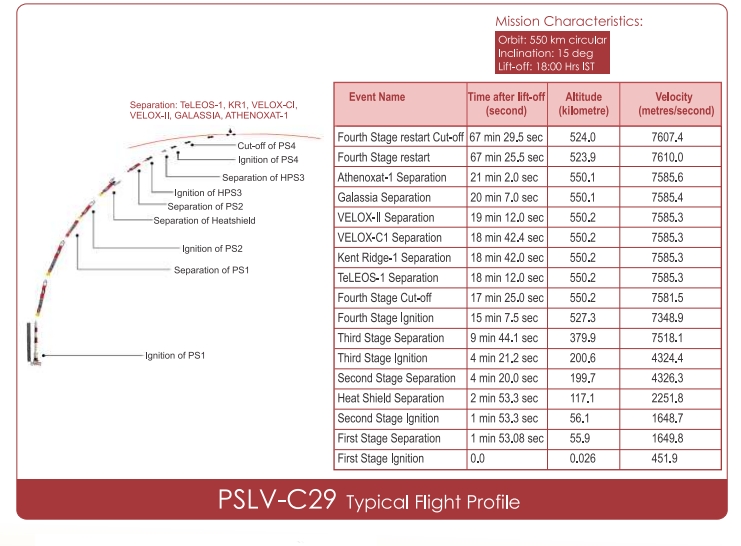
A informação da figura seguinte foi recebida do Giulio 9V1FC - IV3DTB. Reportagens para: giulio.manzoni at micro-space.org
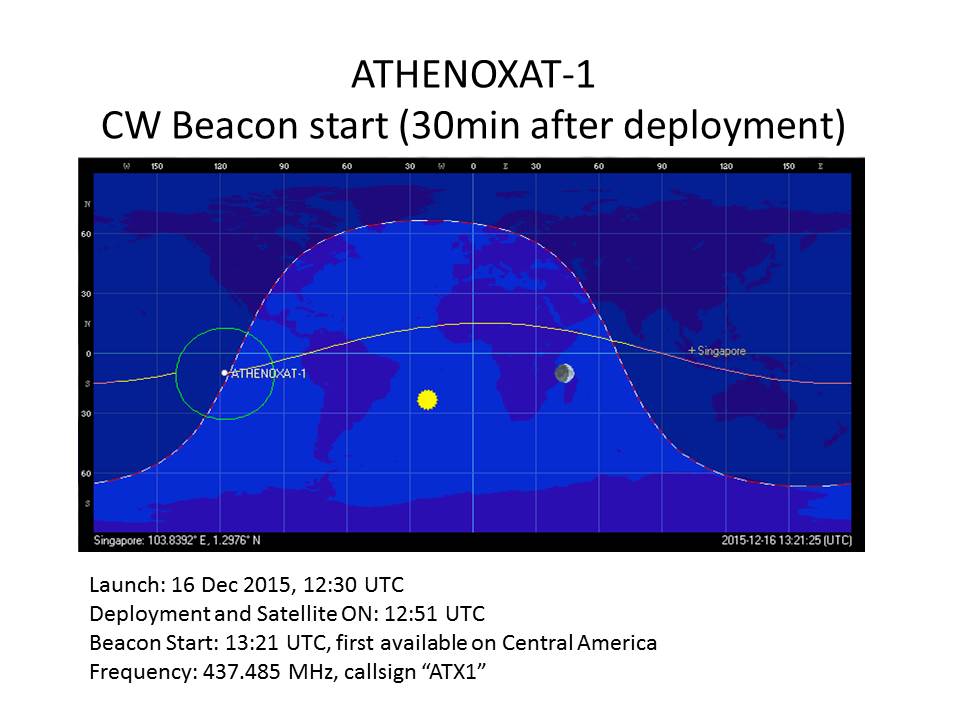
A figura seguinte mostra o momento da ejeção do satélite, 21 mn após o lançamento na Índia:
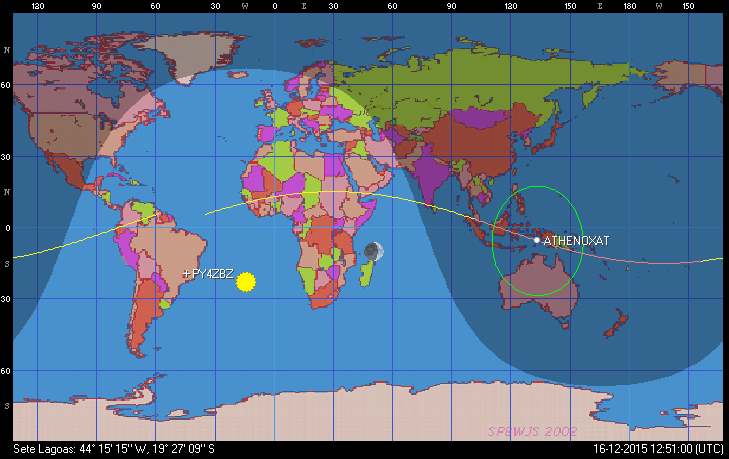
Em 16-12-2015, dia do lançamento, a primeira passagem com visibilidade para mim foi as 21:52 local (23:52 UTC) com apenas 9 graus de elevação máxima, na orbita #7. A figura seguinte mostra a recepção com RTL-SDR e Yagi OWA de 6 elementos:
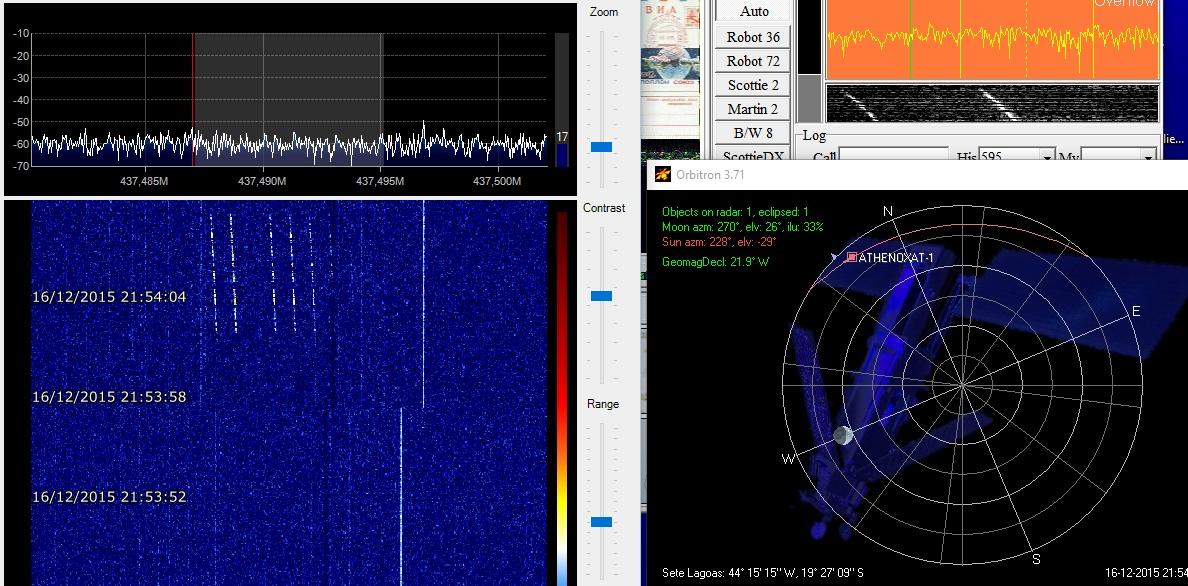
O sinal CW aparece em pelo menos 6 freqüências diferentes, sendo o mais forte o segundo em ordem crescente de freqüência. É porque é modulado em FM com um tom de 840 Hz.
Os dados CW, decodificados em USB, de duas transmissões estão nas figuras seguintes:
Cada transmissão inicia com ATX1, de minuto em minuto. A da figura seguinte mostra a tensão da bateria : 8.28V

Em 22 e 25-12-2015 demodulamos o sinal CW em FM, ficando assim livre do Doppler no áudio (click para ouvir):
O sinal CW é modulado em FM com tom de 840 Hz, porém com modulação residual em AM pelo mesmo tom, o que torna as raias do espectro assimétricas. Além disso, é modulado em ASK pelo sinal CW:
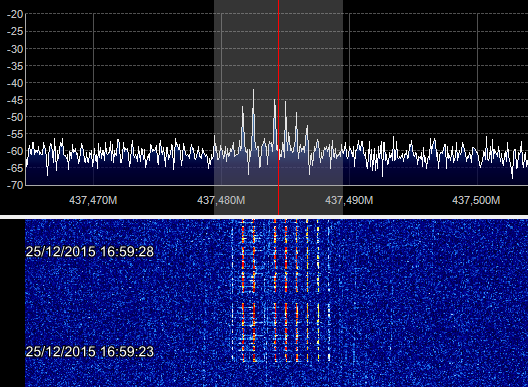
Alternando a cada minuto com o sinal CW, temos o sinal de dados a 1k2:

Vejam o interessante vídeo da Micro Space onde aparece a primeira recepção do beacon do Athenoxat-1 por PY4ZBZ, aos 6:21 :
<
Em 20-09-2016 consegui demodular os dados em FM MSK a 4k8 do ATHENOXAT-1:
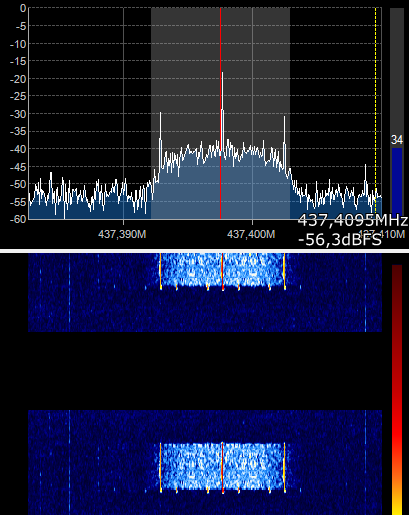
O sinal de dados, que dura 740 ms, alterna a cada minuto com o sinal CW FM.
A figura seguinte mostra o sinal de dados demodulado com o UZ7HO HS_soundmodem:
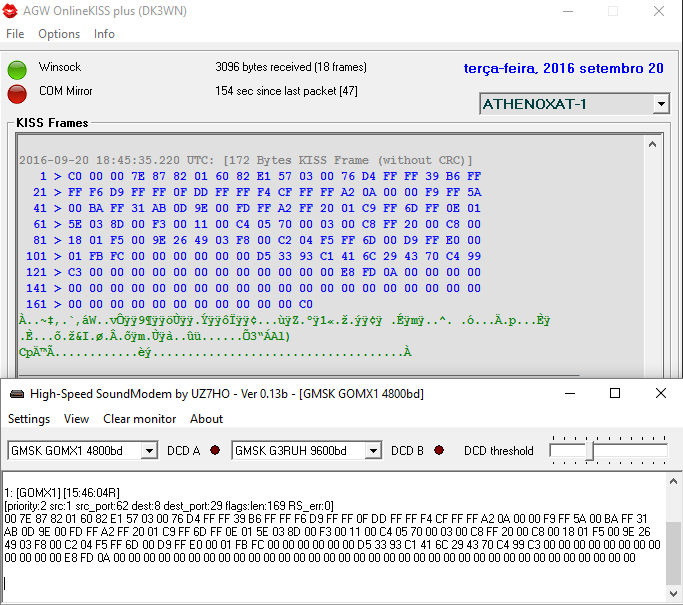
O sinal em banda base (demodulado em FM) tem o seguinte espectrograma:
Espectro do sinal demodulado:
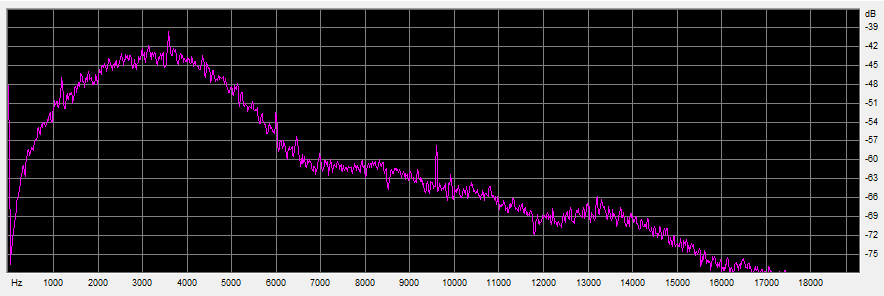
O arquivo do sinal de dados em banda base (áudio demodulado em FM) está aqui.
Em 20-12-2016, com um ano no espaço, recebemos a seguinte mensagem em CW do ATHENOXAT-1:

Em 11-12-2017 recebemos o seguinte email:
Athenoxat-1 new beacon
Dec 11 at 9:07 AM
Dear all,
Greetings from Athenoxat-1 team :)
It's been a while and we're glad to inform that our satellite Athenoxat-1 (ATX) is doing well until today, entering into her 2 years life in space.
To celebrate this event, we have modified the data beacon hopefully for the pleasure of HAM activities around the world.
As we understand, HAM community has been able to decode ATX data beacon using HS Soundmodem (version 0.15b?).
So just to explain the new structure of the data beacon:
Apart from the COM header/sync marker etc, the real data size for each packet expected will be 216 bytes.
The first byte = type of data of either {2, 4, 5} which means {in-house icon image, thumbnail images produced by ATX, the text-note to explain the image contain in the thumbnail}
For the type of data 2 and 5 (single chunk concept):
The next 2 bytes = the variable file size of the icon image / text-note, for example 192.
Thus the next 192 bytes will be the content of the image / text-note itself. The next remaining (216 - 1 - 2 - 192) = 21 bytes can be ignored.
The icon image is in .bmp format & text note is ASCII characters.
For the type of data 4 (multiple chunks concept):
The next 1 byte = the variable size of last remaining bytes
Next 2 bytes = the variable file size of the thumbnail image
Next 2 bytes = chunk marker
For example, the thumbnail image is 3748 bytes. The beacon transmission will be chunk by chunk with each chunk has size 210 bytes.
Therefore roundup (3748 / 210) = 18 with the modulus or last remaining bytes = 178 bytes.
So in this example, each packet will have the first 4 bytes the same value, and the next 2 bytes is chunk marker, and next 210 bytes will be the content of thumbnail image and should expect 18 packets transmitted.
First packet will have chunk marker = 18 and next packet decrements to 17 and so on. The last packet should have chunk marker = 1.
Specific to the packet with chunk marker = 1, the remaining (216 - 1 - 1 - 2 - 2 - 178) = 33 bytes can be ignored.
The thumbnail is in .jpg format.
Should there be any difficulty in reconstructing the data, you can send the recorded packets (not just the screenshot) you've received to us, and we'll be glad to help.
In addition, we would really like to send the overdue QSL cards to you who has been curious and received our ATX beacon last year.
We are thinking to send this QSL card via ATX transmission too. What is needed is only for us to make the appointment :)
Please let us know your confident good quality AOS of ATX and for how much duration.
Then we'll upload to the satellite Flight Planner so that when ATX is passing your AOS time, she'll start transmitting the chunks of the QSL card.
We've prepared the QSL cards and they are about 30kB size, thus the required transmission duration should be less than 5 minutes.
This is because the chunks will be sent in the interval of 2sec, as not to stress ATX radio.
In case there's interference / bad connection during the transmission, we can resend you only the specific chunk markers that you miss at the next appointment time.
We hope this activity will spark the interest of HAM people around the world who can receive ATX beacon.
Since this is a kind of new experiment / features of ATX, let us please test it with your first before we publish this information to the public.
When this new features are confirmed good, we'll update our website too with this detailed information.
Looking forward to your feedback then. Thanks much in advance for your time.
Kind Regards,
Athenoxat-1 Team
Microspace Rapid
9V1FC / 9V1SQ
E em 12-12 copiamos e decodificamos manualmente o primeiro icon com 208 bytes ! :
Outros icons decodificados manualmente:
![]()
![]()
![]()
![]()
![]()
Em 13-12-2017 decodificamos manualmente os primeiros thumbnails:
Global view: Parque do Xingu, State of Mato Grosso, Brazil.:

Narrow-angle night view: Kuala Selangor, Malaysia.:
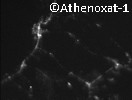
A decodificação manual segue o esquema seguinte:
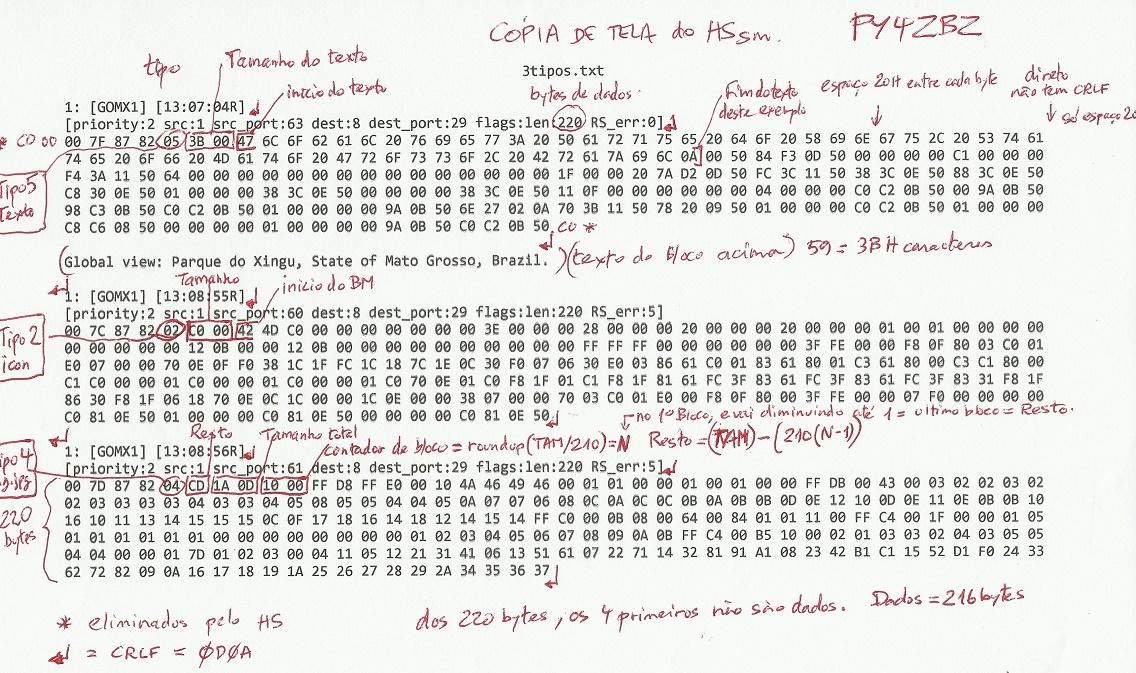
A figura seguinte mostra a recepção dos dados:
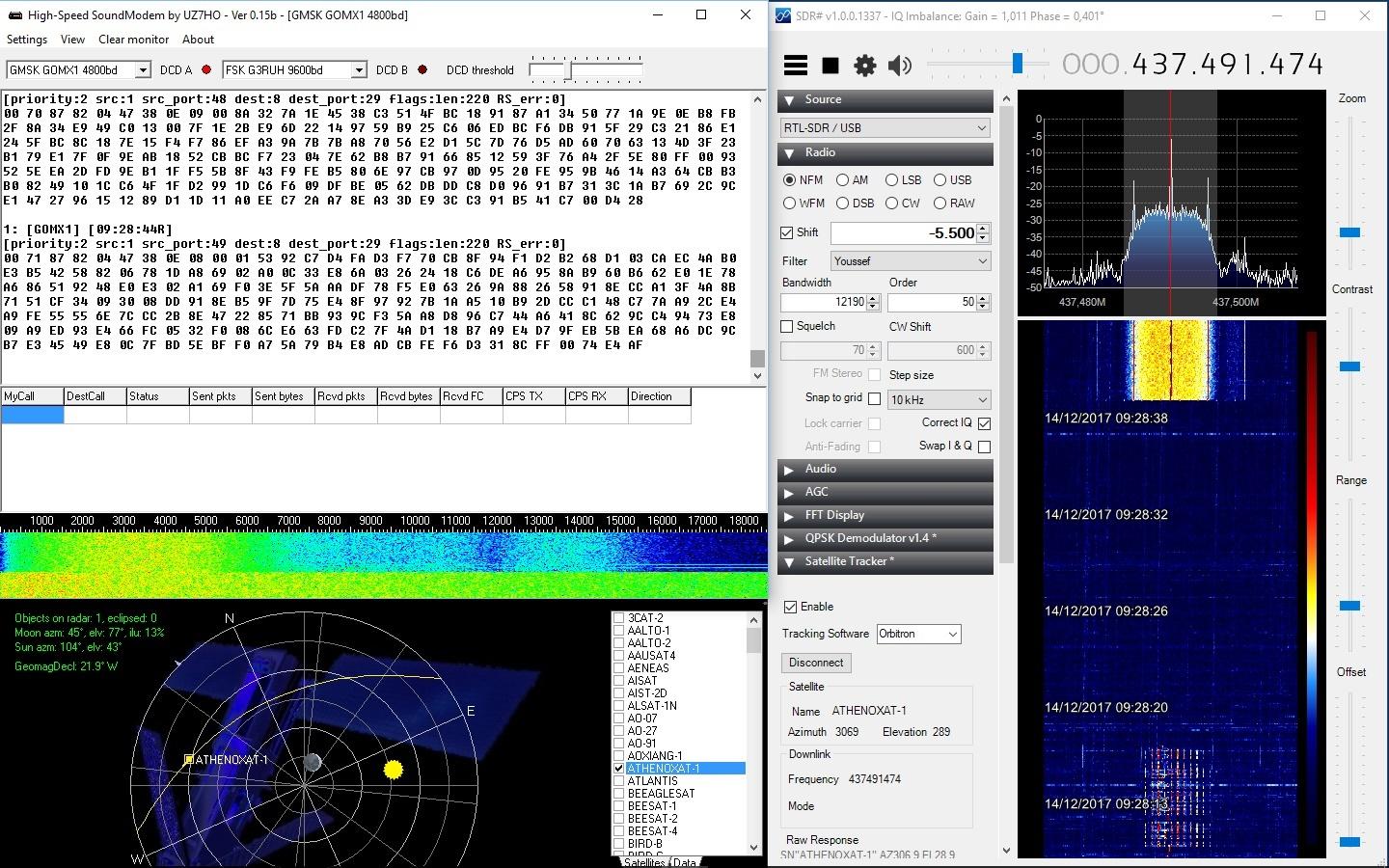
E em 14-12-2017, o Mike DK3WN acaba de lançar um software para decodificação ! Muito obrigado Mike!:
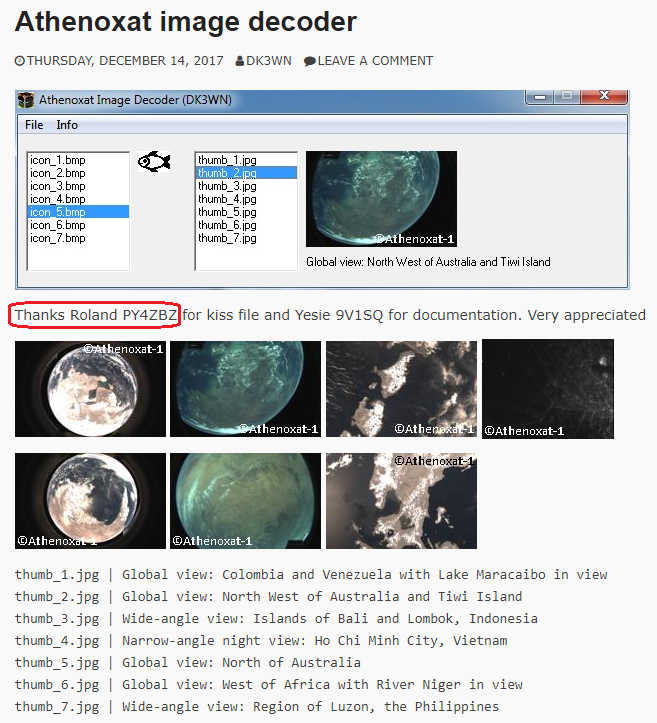
Algumas das imagens recebidas em 15-12-2017:
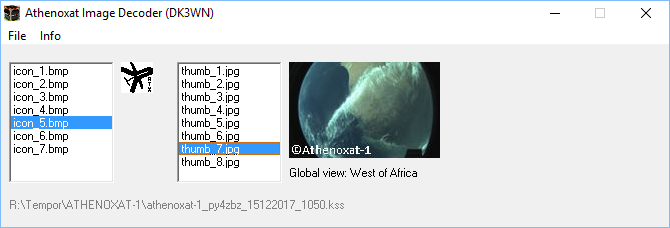
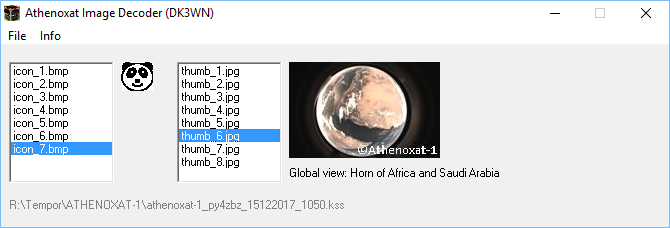
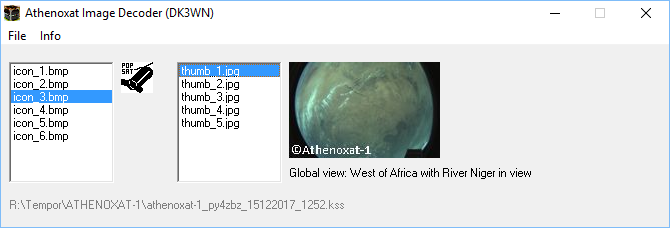
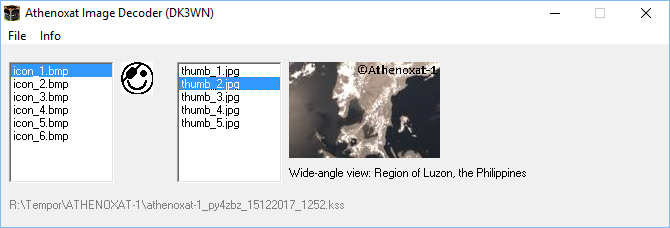
Em 17-12-2017 recebemos o primeiro QSL transmitido direto por um satélite ! Primeira no mundo !
A transmissão da imagem de 31286 bytes demorou 4 minutos ! Foram 149 blocos com 220 bytes, com duração de 0,48 s e intervalos de 1,12 segundos !
A imagem foi decodificada manualmente a partir de dados da tela do monitor do HSsoundmodem !:
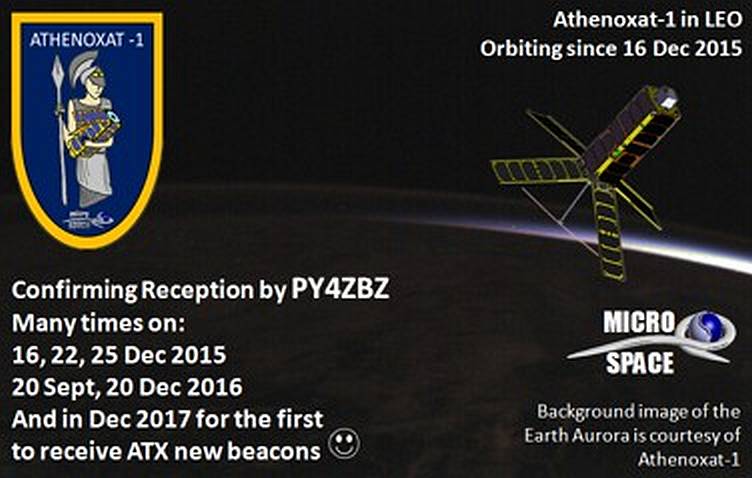
A figura seguinte mostra a estrutura de cada bloco:
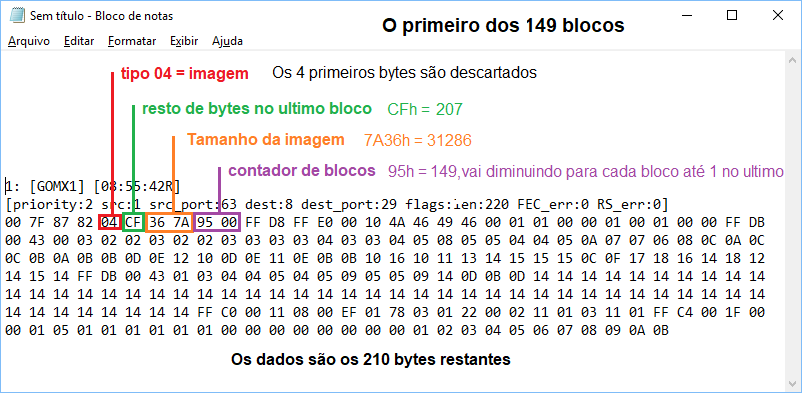
A figura seguinte mostra o QSL sendo decodificado pelo decoder do Mike DK3WN, com os dados recebidos pelo HSsoundmodem:
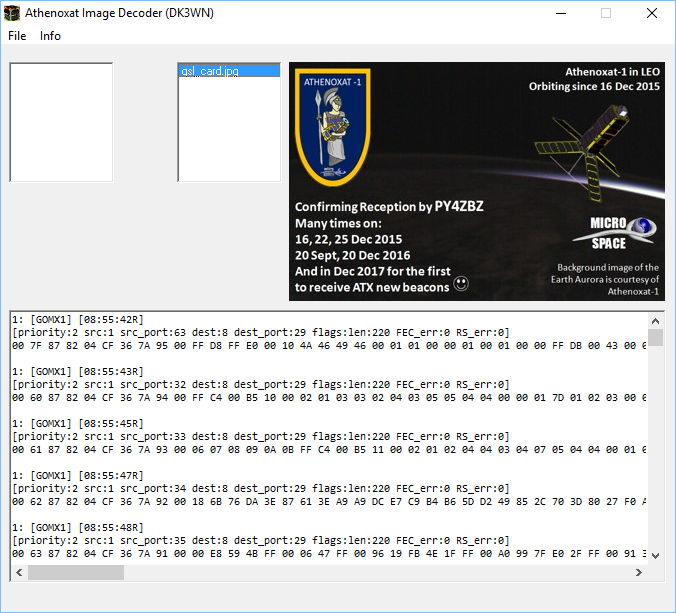
Em 18-12-2017 copiamos o QSL destinado ao Mike DK3WN, pois ele na Alemanha não está no footprint do ATX, que tem orbita com baixa inclinação de 15 graus.
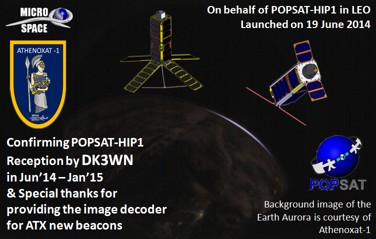
Em 19-12-2017 copiamos, junto com o Edson, o QSL destinado a ele, PY2SDR:
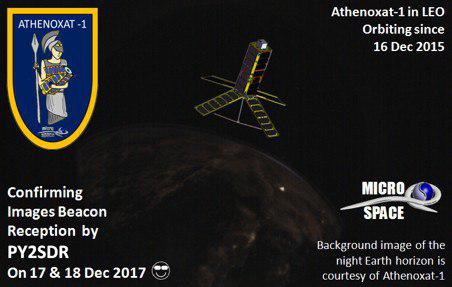
Em 21-12-2017 recebemos um QSL que foi transmitido em duas partes, as 08:06:30 e 09:48:30 UTC, com tamanho total de 53 kB :
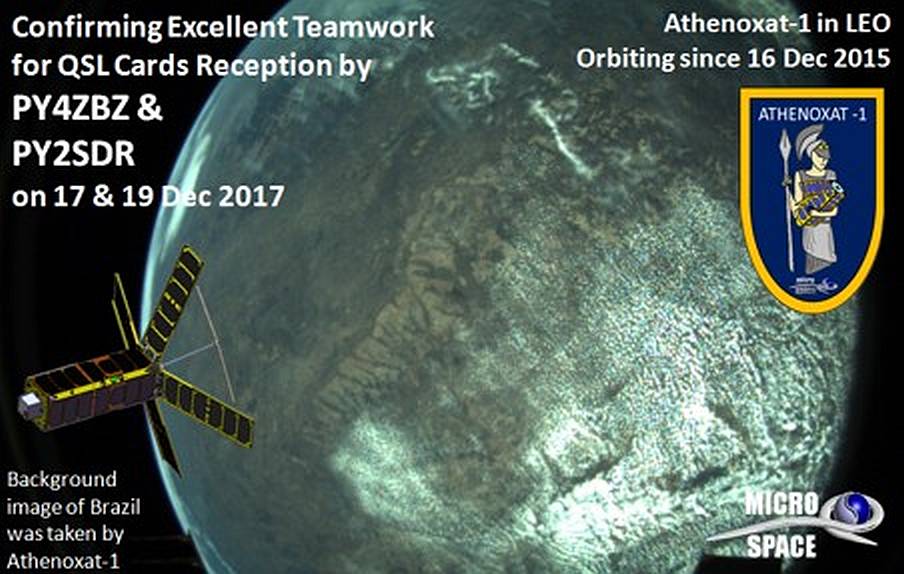
(ampliado 200%) Mais uma vez usando alguns blocos da recepção de PY2SDR, TNX Edson !
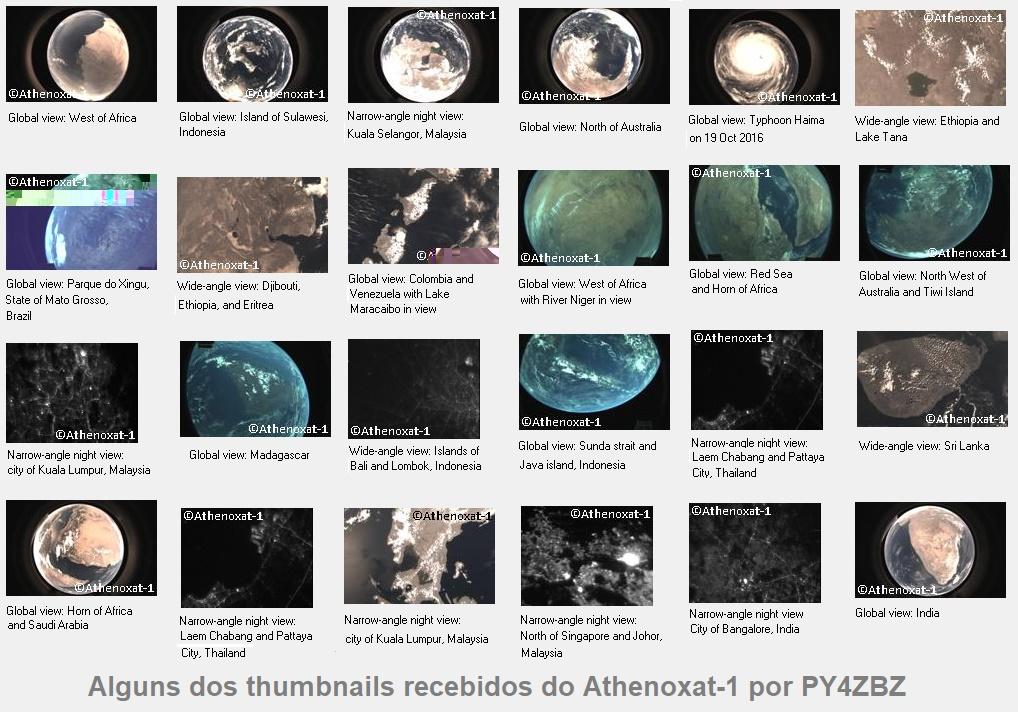
A imagem seguinte mostra alguns dos Icons recebidos:
![]()
Em 04-01-2018 o Yesie modificou o formato de transmissão do Athenoxat-1:
Dear Everyone,
Happy new year :)
And with the new year, we have just updated again our satellite Athenoxat with addition of new beacon type, lets call it (image) puzzle.
We are currently testing it in orbit since yesterday. Some preferences we'd like to do for now:
1. Either only beacon puzzle OR beacon icon and thumbnails that is enabled at a time - for now it's beacon puzzle
2. For beacon puzzle, currently the setting is 12 frames per burst (we'll be switching between 10 or 12)
3. Beacon ratio for Data : CW is 1:1 every 30sec, means data beacon will come every 1min
With this setting, the system is stable enough.
Also based on the feedback, we have changed the structure a little.
As before, we can ignore the first 6 bytes if it's with OnlineKISS, or 4 bytes if it's with HS SoundModem (if I'm not wrong).
Then the first byte is the type: {2, 3, 4, 5} = {icon, puzzle, thumbnail, text}
For icon:
Next 2 bytes: file size of the iconNext 200 bytes: the content of the icon itself
For puzzle & thumbnail (also for scheduled TX of big-size image):
Next 4 bytes: ID (that can also be checksum of the image most of the time)Next 1 byte: remaining last byte (file-size modulus 200)
Next 2 bytes: file size of the image
Next 2 bytes: chunk/frame marker
Next 200 bytes: the content of the image frame itself
For text:
Next 2 bytes: file size of the text
Next 90 bytes: the note text itself (description of the image puzzle / thumbnail)
Next 4 bytes: the ID of the image puzzle / thumbnail that is being described
So just to summarize, the changes are just the addition of 4-byte ID and the content size from 210 to 200 bytes.
Also based on feedback from Roland, the scheduled TX mechanism is now instead of 1 frame - delay - 1 frame etc.. we have changed it to 10 frames - delay - 10 frames etc...
Many thanks in advance Everyone, and wishing you a fruitful year ahead :)Kind Regards,
Yesie 9V1SQ
Em 06-01-2018 captamos uma transmissão no formato novo. Imagem thumbnail decodificada manualmente:

Global view: Colombia and Venezuela with Lake Maracaibo in view.
Novo formato para textos:
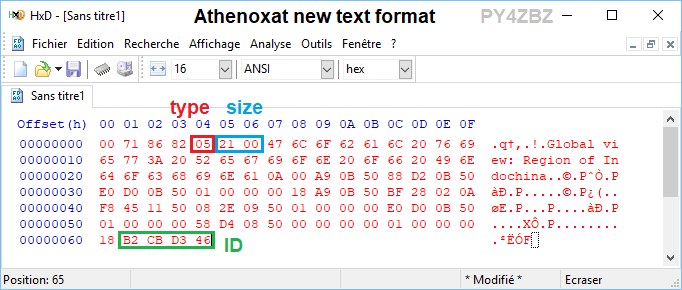
Em 12-01-2018 recebemos uma imagem especial do Athenoxat-1, em duas passagens programadas, enviada pelo Yesie 9V1SQ, que pode ser vista na figura seguinte:
Elaboramos um programa (figura acima) para decodificar o beacon de dados do Athenoxat-1 e gerar os icons e thumbnails contidos nele.
Update: a versão 0.97b agora decodifica diretamente arquivos *.txt criados com os kiss2hex e/ou Arapuca do PY2SDR, ou copias de texto armazenadas via Arapuca no site da AMSAT-BR, assim como copias da tela do monitor do High-Speed SoundModem salvas como arquivo de texto. Também gera o arquivo *.HEX correspondente.
Update: a versão 1.02 salva os frames das imagens recebidas incompletas e monta automaticamente a imagem assim que os frames faltantes forem recebidos. Também permite decodificar os puzzles, quando completamente recebidos. Usa uma nova forma de identificar os icons, com 4 bytes no lugar de 2.
Update: corrigido um bug na decodificação de puzzles na versão 1.3
Click para download. Versão v1.3 (de 31-05-2018)
Exemplo de puzzle recebido:
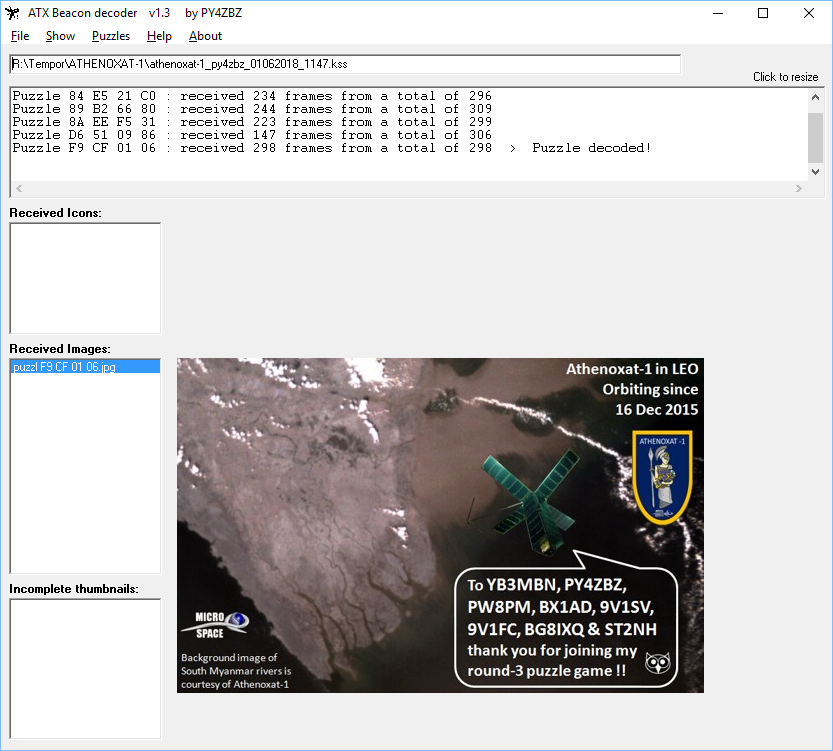
Em 18-03-2018 foi completada a primeira fase de puzzles, com a contribuição das seguintes estações:
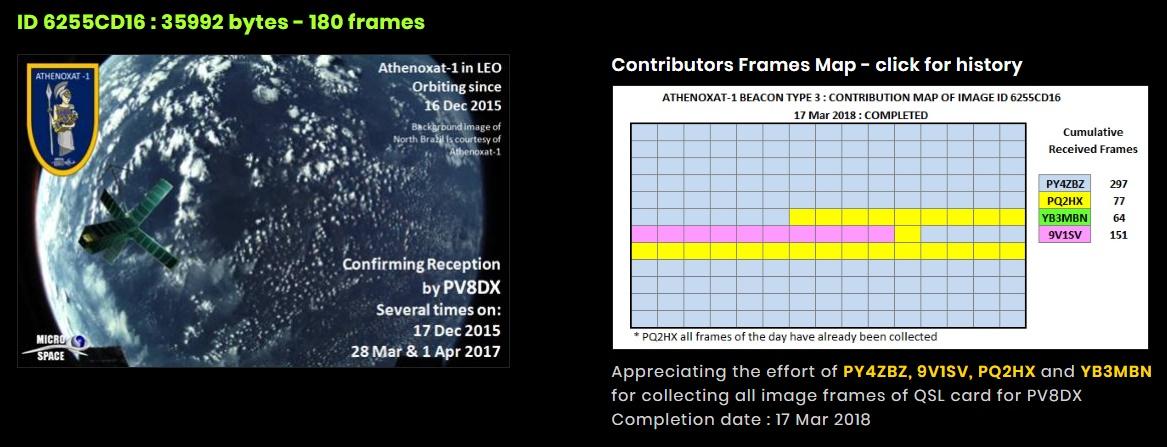
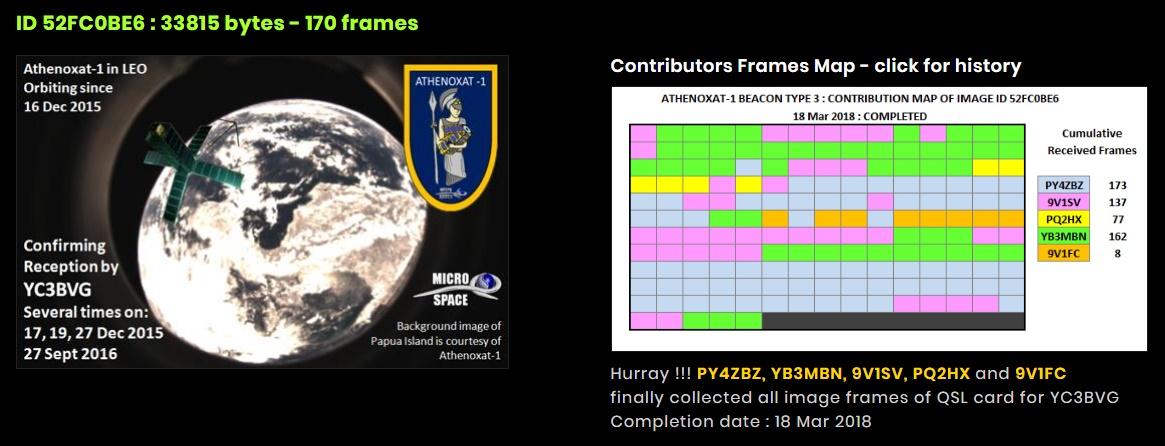
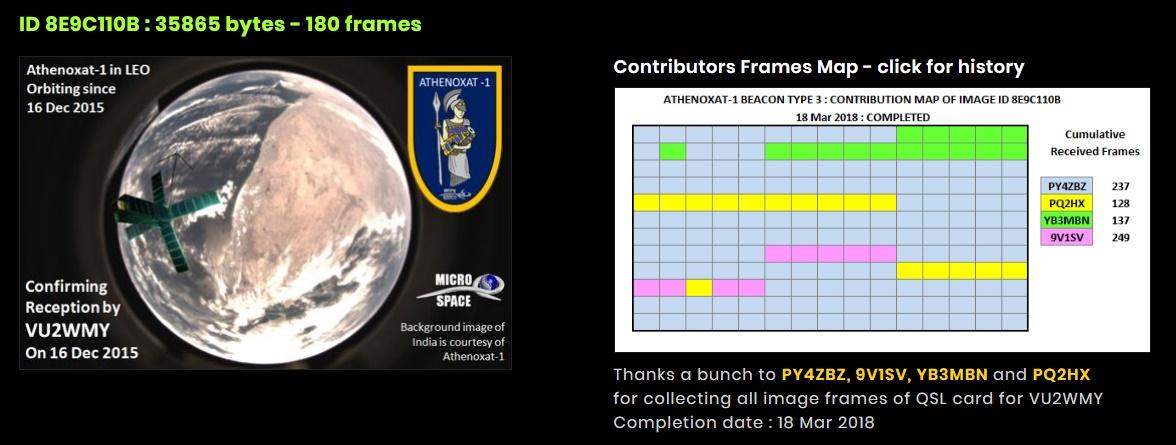
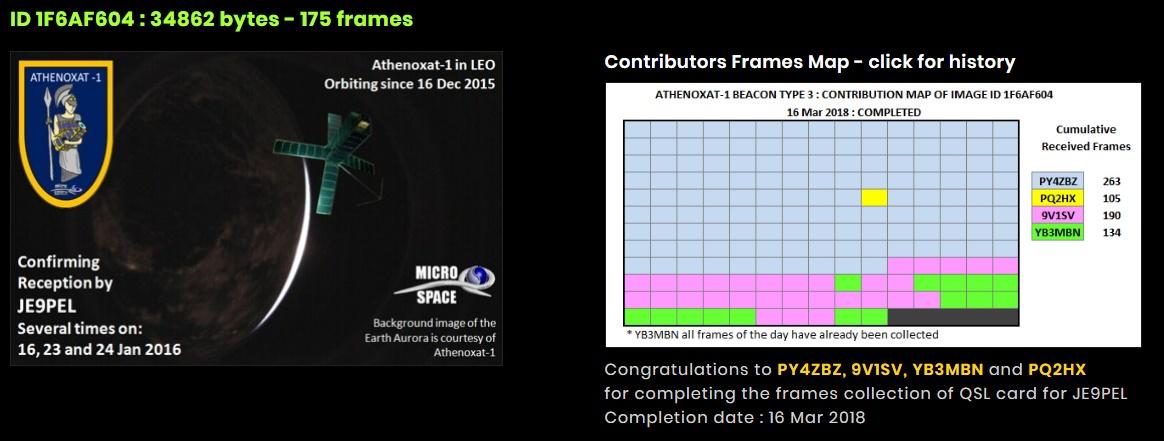
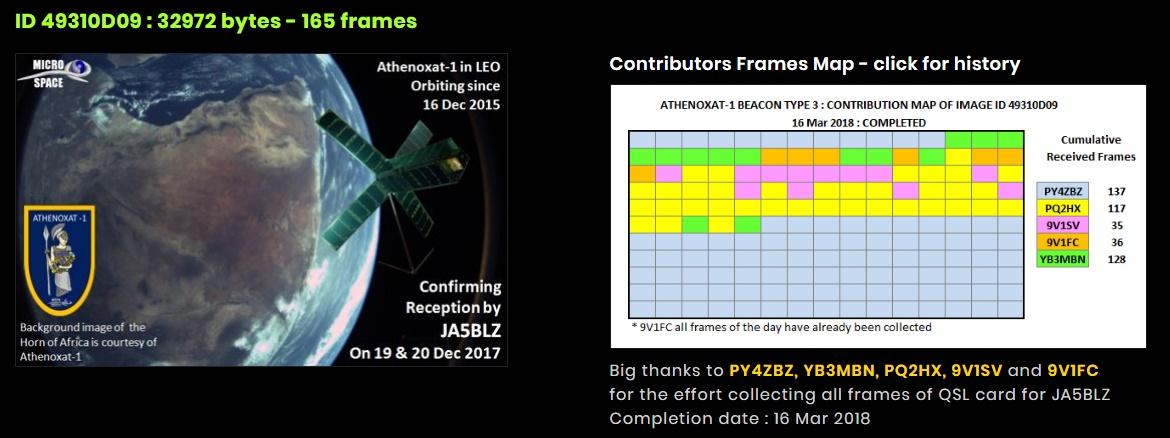
Em 05-04-2018 foi completada a segunda fase de puzzles transmitidos pelo Athenoxat-1:
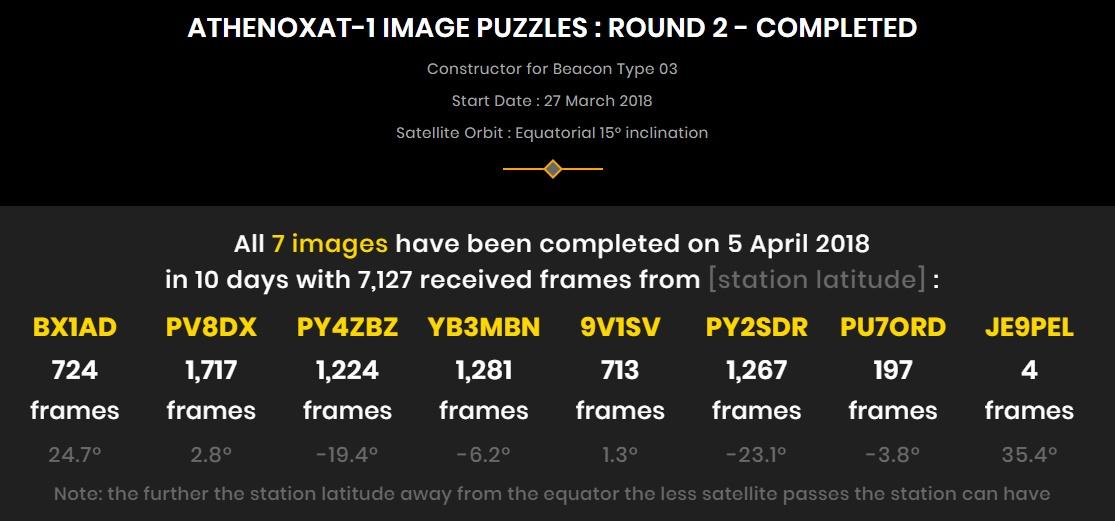
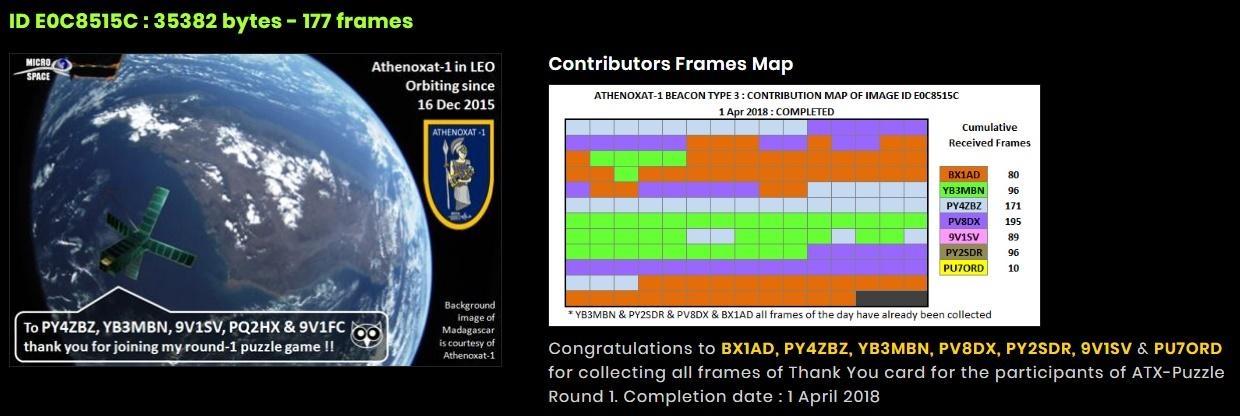
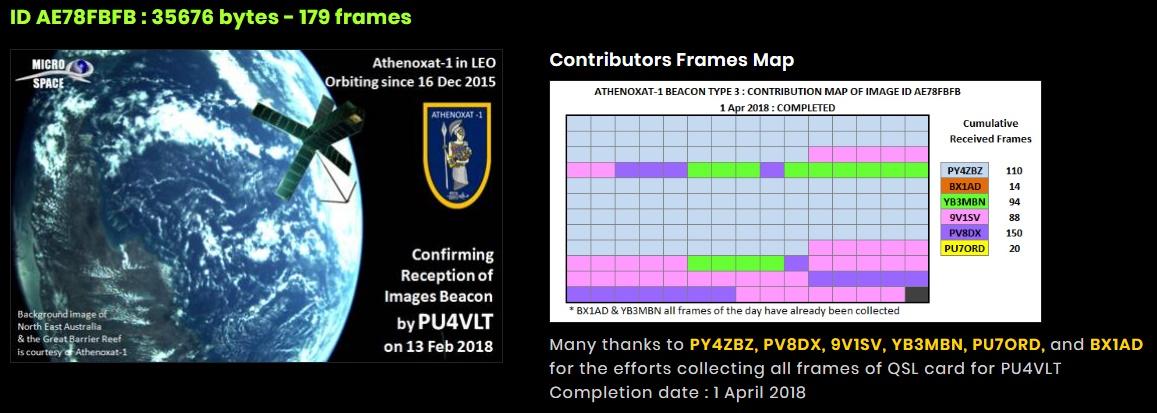
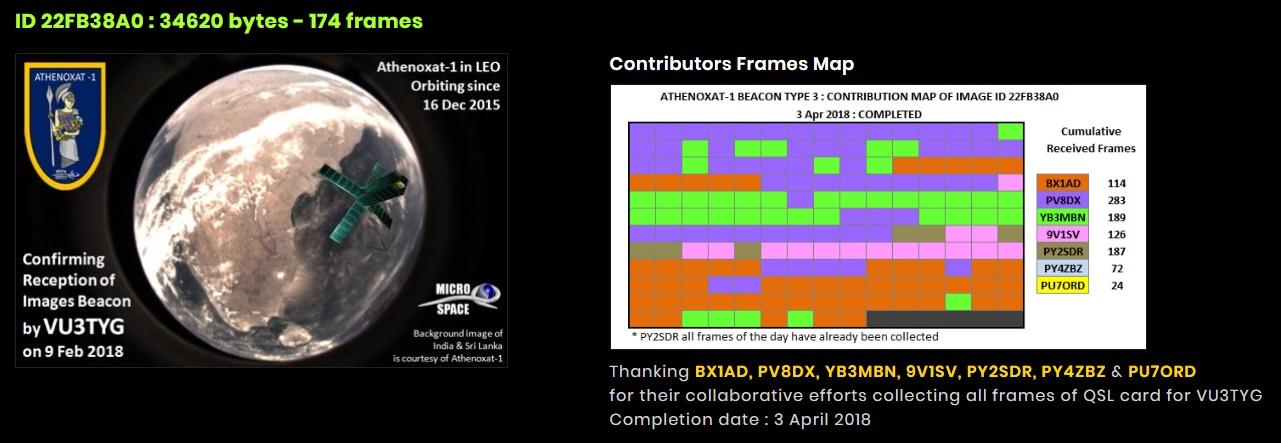
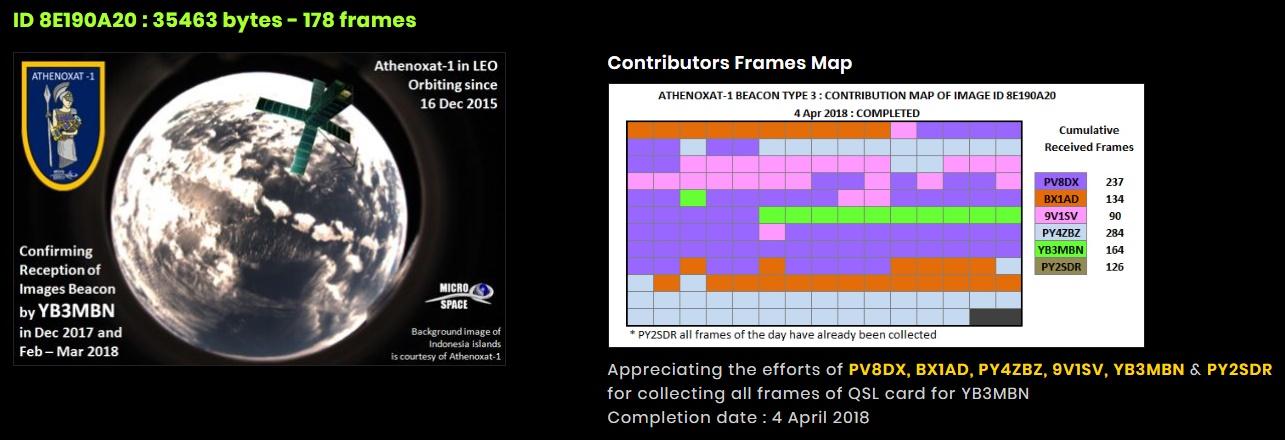
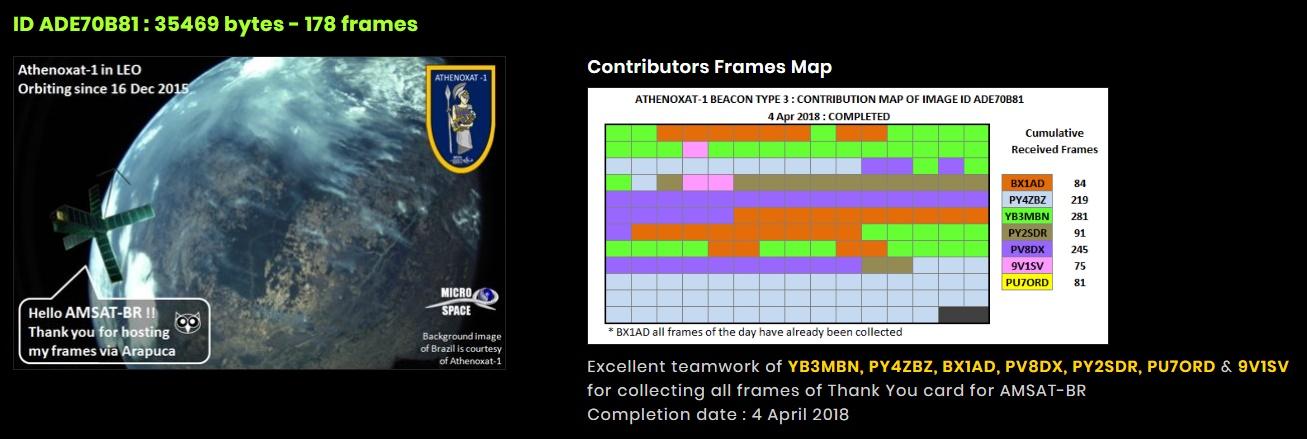
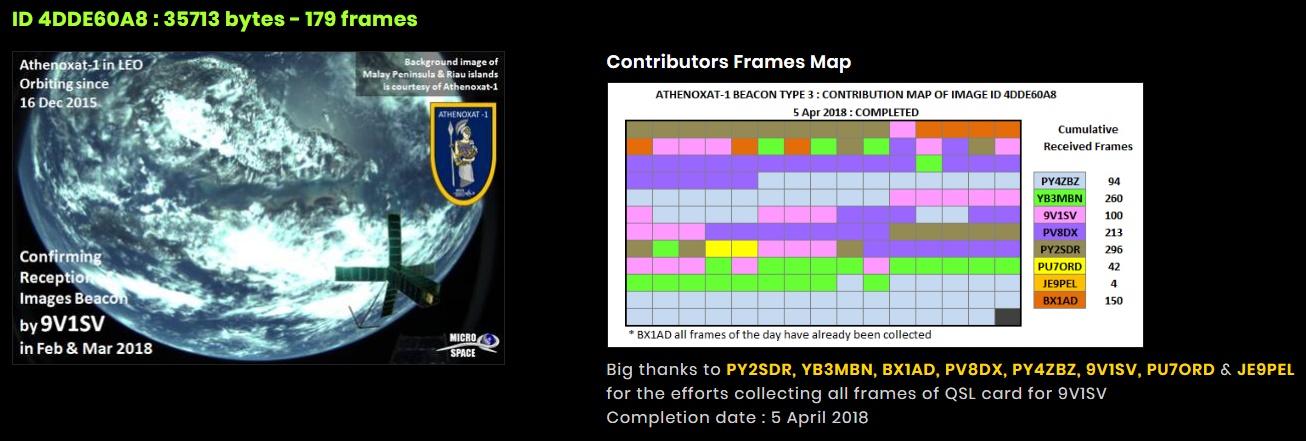
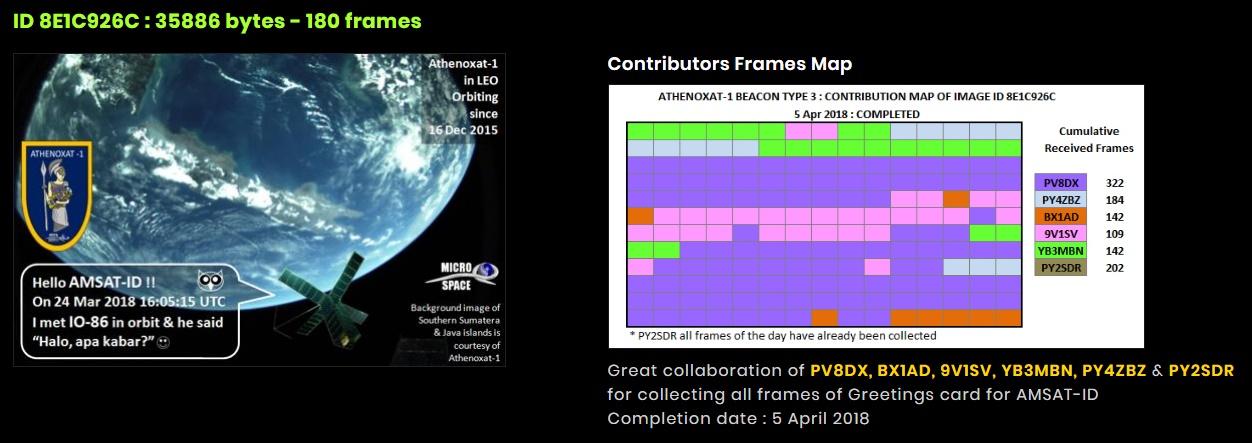
Em 19-04-2018 conseguimos completar 3 puzzles da fase 3 usando nossos dados e os de BX1AD enviados para o repositório Arapuca do site AMSAT-BR !
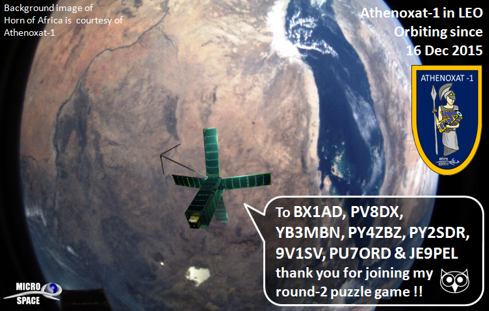
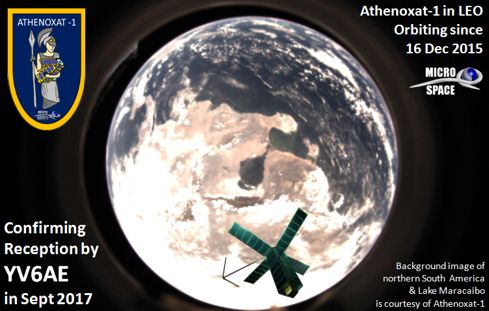
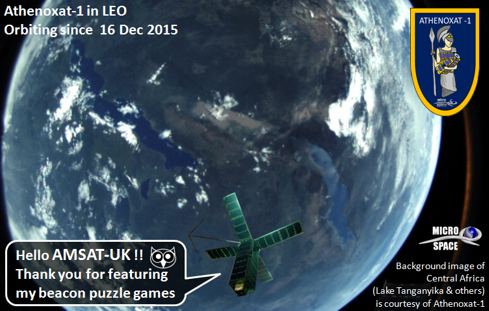
Site do Athenoxat-1 para radioamadores
Ótimo artigo PDF sobre o Atenoxat-1
73 de Roland PY4ZBZ